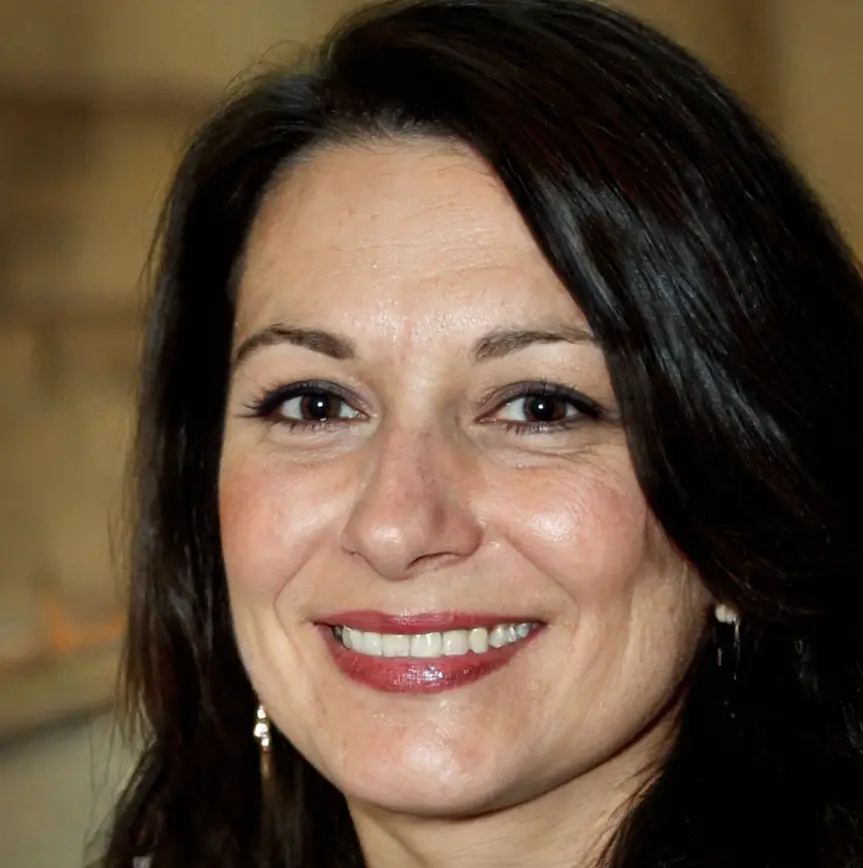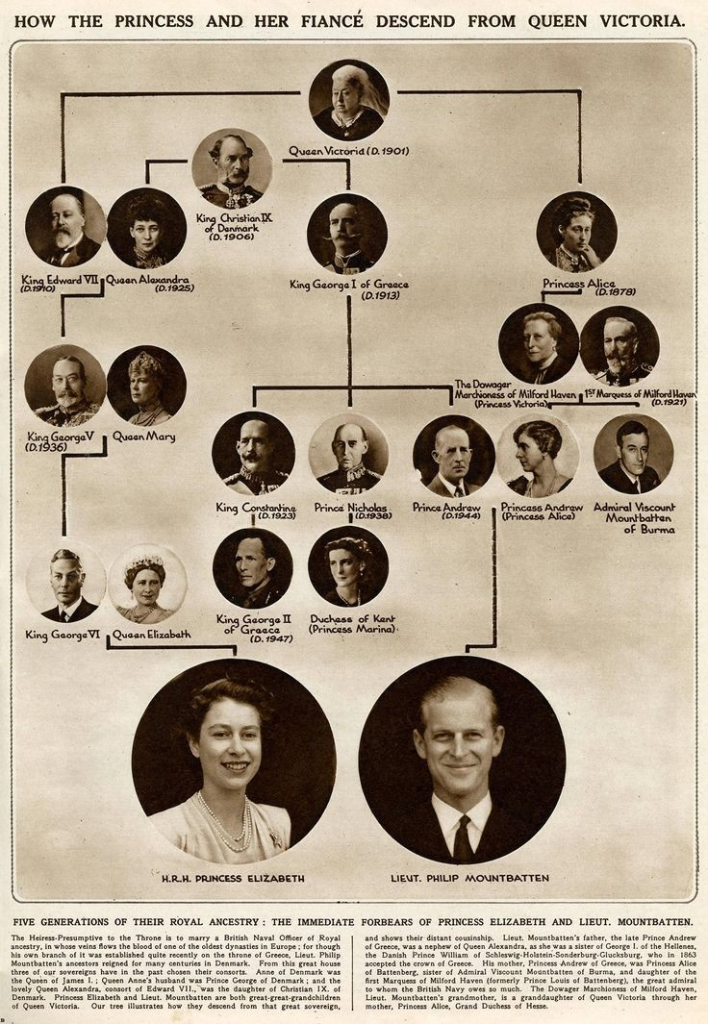This table only includes the immediate family members and descendants of Prince Philip and Queen Elizabeth II, and does not extend to all relatives such as cousins and their descendants. Please note that this table may not be exhaustive or fully up-to-date, as family dynamics and titles could change over time.
In my experience, delving into the Prince Philip family tree has been a voyage through history. My expertise in genealogy allowed me to appreciate the intricate web of European royalty that shaped his lineage.
I believe that understanding his ancestry isn’t just about recognizing the nobility but grasping the cultural and historical confluence that he embodied. Through my research, I’ve traced connections to the Romanovs and witnessed how his marriage to Queen Elizabeth II intertwined with the British monarchy, a narrative that has fascinated me and highlighted the profound legacy that each family member carries forward.
| Name | Family Status | Related To |
|---|---|---|
| Prince Philip | Patriarch | Queen Elizabeth II (spouse) |
| Queen Elizabeth II | Matriarch | Prince Philip (spouse) |
| Charles, Prince of Wales | Son | Prince Philip & Queen Elizabeth II |
| Princess Anne | Daughter | Prince Philip & Queen Elizabeth II |
| Prince Andrew | Son | Prince Philip & Queen Elizabeth II |
| Prince Edward | Son | Prince Philip & Queen Elizabeth II |
| Camilla, Duchess of Cornwall | Daughter-in-law | Charles, Prince of Wales (spouse) |
| Diana, Princess of Wales | Former Daughter-in-law | Charles, Prince of Wales (former spouse) |
| Sarah, Duchess of York | Former Daughter-in-law | Prince Andrew (former spouse) |
| Sophie, Countess of Wessex | Daughter-in-law | Prince Edward (spouse) |
| Prince William | Grandson | Charles, Prince of Wales (father) |
| Prince Harry | Grandson | Charles, Prince of Wales (father) |
| Zara Tindall | Granddaughter | Princess Anne (mother) |
| Peter Phillips | Grandson | Princess Anne (mother) |
| Princess Beatrice | Granddaughter | Prince Andrew (father) |
| Princess Eugenie | Granddaughter | Prince Andrew (father) |
| Lady Louise Windsor | Granddaughter | Prince Edward (father) |
| James, Viscount Severn | Grandson | Prince Edward (father) |
| Catherine, Duchess of Cambridge | Granddaughter-in-law | Prince William (spouse) |
| Meghan, Duchess of Sussex | Granddaughter-in-law | Prince Harry (spouse) |
| Prince George of Cambridge | Great-Grandson | Prince William (father) |
| Princess Charlotte of Cambridge | Great-Granddaughter | Prince William (father) |
| Prince Louis of Cambridge | Great-Grandson | Prince William (father) |
| Archie Mountbatten-Windsor | Great-Grandson | Prince Harry (father) |
| Lilibet Mountbatten-Windsor | Great-Granddaughter | Prince Harry (father) |
Key Takeaways
- Prince Philip’s heritage includes both Greek and Danish ancestry, connecting him to prominent royal families such as the Romanov dynasty and the Danish royal family.
- His marriage to Queen Elizabeth II united two storied lineages and solidified his position within the British monarchy.
- Prince Philip and Queen Elizabeth II raised four children, each reflecting a blend of royal tradition and individual achievement.
- Prince Philip’s offspring, grandchildren, and great-grandchildren reflect the evolving nature of the royal family and the potential impact of Charles III’s reign on their roles.
Early Life and Heritage
You’ll discover that Prince Philip’s early life was marked by a rich tapestry of royal connections. Beginning with his birth to a prominent family during a time of conflict on the Greek island of Corfu, his entry into the world united the bloodlines of Prince Andrew of Greece and Denmark with those of Princess Alice of Battenberg.
Each of his grandparents held significant stature. On his paternal side, he boasted George I of Greece, while his maternal lineage traced back to Princess Victoria of Hesse and by Rhine, and Louis of Battenberg, linking him to Queen Victoria herself.
This royal mosaic not only framed his childhood but also foreshadowed his future role within the British monarchy.
Greek and Danish Ancestry
Explore Prince Philip’s Greek and Danish roots, as he descended from both King George I of Greece and the Danish royal family through his father, Prince Andrew. His heritage is a tapestry of European royalty, with his paternal grandparents, George I and Olga Constantinovna of Russia, connecting him to the Romanov dynasty.
On the maternal side, Prince Louis of Battenberg and Princess Victoria of Hesse and Rhine brought further illustrious lineage. Victoria, daughter of Queen Victoria, had siblings who married German princes, weaving a network of regal connections across the continent.
Despite relinquishing his Greek and Danish titles, Philip’s ancestry remained a significant part of his identity throughout his life.
Marriage to Queen Elizabeth II
As you delve into the Prince Philip family tree, it’s essential to note that his marriage to Queen Elizabeth II was a defining chapter in his life, uniting two storied lineages and ushering in a new era for the British monarchy.
Their union, marked by a grand ceremony, solidified the Duke of Edinburgh’s position within the royal family. The royal couple’s journey began when Buckingham Palace announced their engagement, a moment of national celebration.
Their marriage to Queen Elizabeth II on November 20, 1947, was a testament to their enduring commitment, eventually becoming one of the longest royal partnerships. Together, they raised four children, and through decades of service, their alliance remained a cornerstone of the monarchy’s continuity and evolution.
Prince Philip’s Offspring
Commonly, you’ll find that Prince Philip’s role as a father took center stage in his personal life, with his four children each carving their own paths within and beyond royal duties. Here’s a closer look at his offspring:
Prince Charles:
First child: Born in 1948, heir to the British throne.
Princess Anne:
Prince Philip and Queen Elizabeth II gave birth to their second child and only daughter in 1950, who became an accomplished equestrian.
Prince Andrew:
Two sons: Born in 1960, served in the Royal Navy.
Prince Edward:
Youngest son: Born in 1964, ventured into television production.
Each child, from Prince Charles to Philip Hawke Brooksbank, reflects a blend of royal tradition and individual achievement.
Royal Grandchildren
You’ll encounter a diverse array of personalities and royal duties when you delve into the lives of Prince Philip’s eight grandchildren. Among them are prominent figures such as Prince William and Prince Harry.
William’s children, George, Charlotte, and Louis, are in line for the throne, continuing Elizabeth’s legacy. Harry and Meghan have stepped back from royal duties, but their children, Archie and Lilibet ‘Lili’ Diana, remain part of this storied lineage.
Princess Beatrice’s marriage to Edoardo Mapelli Mozzi has brought Sienna Elizabeth Mapelli Mozzi into the family, blending ancient aristocracy with royal tradition.
Each grandchild, from Lady Louise Windsor to James, Viscount Severn, contributes their unique chapter to the rich tapestry of the family’s history.
Great-Grandchildren Generations
Each of Prince Philip’s four great-grandchildren, from the eldest Savannah Phillips to the youngest Sienna Elizabeth Mapelli Mozzi, reflects a new chapter in the royal narrative that you’re now a part of exploring.
As you delve into the layers of heritage, you’ll find:
Charles III’s reign, marking an era where these young royals may shape their roles
Prince George’s potential future as King
Princess Charlotte’s unique position, blending tradition with modernity
The Princess of Wales’s influence on her children, instilling duty and empathy
Titles such as Royal Highness, carried by some and not others
George VI’s legacy, continued through the Countess of Wessex’s family
The evolving nature of ‘royal family,’ as seen in the lives of the great-grandchildren
Through these young lives, the royal story continues, interweaving the past with the present.
European Royal Connections
Delving into Prince Philip’s lineage, you’ll uncover a network of European royal connections that date back centuries, binding the fabric of his family tree with the continent’s most storied monarchies. His paternal grandparents were none other than King George I of Greece and Olga Constantinovna of Russia, firmly establishing royal bonds.
On his mother’s side, Prince Louis of Battenberg and Princess Victoria of Hesse and Rhine brought him closer to the European royal nexus.
Philip’s ancestry linked him directly to the English, German, and Russian royal families, a testament to his illustrious heritage. As a descendant of the Romanovs, his European royal connections reached the uppermost tiers of nobility.
Renouncing his Greek and Danish titles, he made a first commitment to the United Kingdom, integrating into the British royal family as Philips.
The Legacy of Prince Philip
As you trace the branches of Prince Philip’s family tree, his legacy emerges not only through his royal ancestry but also through the lasting impact of his public service and support to the Queen.
His life was remarkable:
- Served with distinction in the Royal Navy during World War II.
- First met the then-Princess Elizabeth while serving.
- Rose to the rank of commander before his royal duties took precedence.
Marriage to Queen Elizabeth II at Westminster Abbey, leading to decades of royal engagements.
- Father to four children, including King Charles III.
- Resided primarily at Windsor Castle in later years.
Years later, Philip’s father’s legacy is reflected in his son’s dedication to duty, mirroring the steadfastness of his own naval career.
Frequently Asked Questions
What Is the Royal Lineage of Prince Philip?
You’re exploring royal ancestries and stumbled upon Prince Philip’s lineage. He descended from Greek and Russian royalty, including King George I of Greece and related to the Romanovs, intertwining with Britain’s monarchy through marriage.
Was Queen Elizabeth and Philip Related?
Yes, you’re right in thinking Queen Elizabeth and Philip were related. They were both great-great-grandchildren of Queen Victoria, making them third cousins, sharing a notable royal ancestor. Their lineage intertwined through shared forebears.
Who Was Prince Philip’s Family?
You’re curious about Prince Philip’s family? He was born to Princess Alice and Prince Andrew, married Queen Elizabeth II, and they had four children, including the current King Charles III.
Is Prince Philip Elizabeth’s Brother?
No, you’re mistaken; Prince Philip isn’t Elizabeth’s brother. He was her husband, and they married in 1947. They’re not siblings; instead, they shared a long life together as a royal couple.
Conclusion
You’ve journeyed through the branches of Prince Philip’s family tree, uncovering his Greek and Danish roots.
Exploring his marriage to Queen Elizabeth II, you have met their descendants. From their children to great-grandchildren, his legacy intertwines with European royalty.
As you reflect on his heritage and the Romanov connection, remember Philip’s unique role in shaping the British monarchy. His story is a testament to the rich tapestry of history within royal bloodlines.

Elizabeth Miller is a seasoned family tree researcher with over 16 years of expertise in tracing the genealogies of historical, celebrity, and well-known individuals. Holding relevant qualifications, they actively contribute to genealogy communities and have authored articles for prominent publications, establishing their authority in the field. Elizabeth Miller is dedicated to unraveling the intricate family histories of notable figures, helping clients discover their historical roots. Satisfied clients attest to their trustworthiness and the enriching experience of working with them. As a dedicated storyteller who brings history to life through genealogy, Elizabeth Miller is a reliable and authoritative source for those seeking to explore the family trees of historical, celebrity, and well-known personalities.

